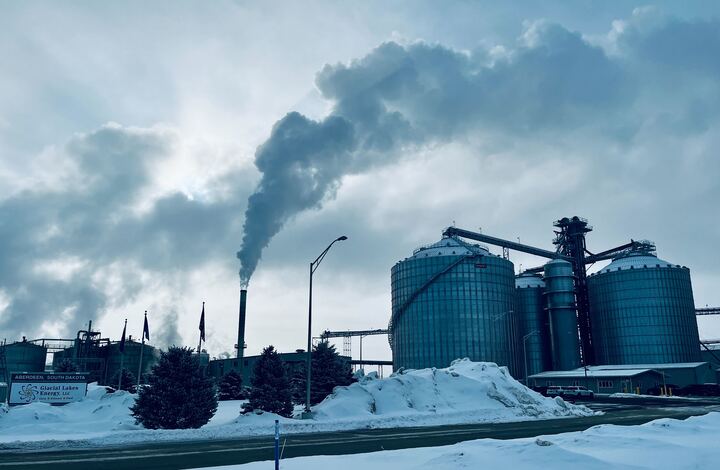
Christopher Ingraham/Minnesota Reformer
A report out this week finds that biofuel refineries, which are overwhelmingly concentrated in the Midwest’s corn-producing states, emit significant amounts of compounds that foul the air and threaten public health.
The study was produced by the Environmental Integrity Project, a nonprofit based in Washington, D.C. It finds that the total quantity of air pollutants released by the nation’s biofuel refineries adds up to 12.9 million pounds annually, close to the 14.5 million pounds emitted by traditional oil refineries.
The data in the report comes from emissions inventories maintained by the Environmental Protection Agency.
One of the emitted pollutants is formaldehyde, a toxic compound used, among other things, to prevent corpses from decaying. It’s also a widely recognized carcinogen, especially when emitted in gaseous form.
The nation’s biofuel plants reported more than 235,000 pounds of formaldehyde emissions in 2022, more than three times the amount released by petroleum refineries.
“Despite its green image, the biofuels industry releases a surprising amount of hazardous air pollution that puts local communities at risk – and this problem is exacerbated by EPA’s lax regulation,” said Courtney Bernhardt, director of research for the Environmental Integrity Project.
There are at least 226 biofuel plants in the country, according to the report, including 21 in Minnesota, mostly in the southwest quadrant of the state.

In 2022 those plants emitted roughly 715,000 pounds of hazardous pollutants, with the majority coming from the Minnesota Soybean Processors biodiesel facility in Brewster. Minnesota’s ethanol refineries also produced the equivalent of 2 million metric tons of carbon dioxide, and nearly 3 million tons of other regulated air pollutants including lead, sulfur dioxide, carbon monoxide, nitrogen oxides and particulate matter.
“Biofuel factories release surprisingly large amounts of hazardous air pollution, often into rural Midwestern communities that suffer from unhealthy air quality despite having no significant pollution sources around them, other than the smokestacks of ethanol refineries,” the report concludes.
Those emissions undercut the industry’s carefully-crafted image as a “green” alternative to traditional, petroleum-based fuels. Scientists are increasingly concluding that crop-based ethanol may actually be worse for the climate than regular gasoline once a full accounting of emissions associated with its production is made.
Roughly 5% of the total surface area of Minnesota — more than the land taken up by every town, city and road — is used to grow corn for ethanol production.
The report faults the EPA for subjecting ethanol plants to less stringent emission standards than regular oil refineries. The authors also call on policymakers to eliminate the mandates and subsidies for ethanol production that prop up the industry.
“Biofuels are growing at a rapid rate in part because of government funding and regulatory mandates for blending ethanol into gasoline,” the authors write. “But the environmental benefits of these government supports are questionable at best.”
